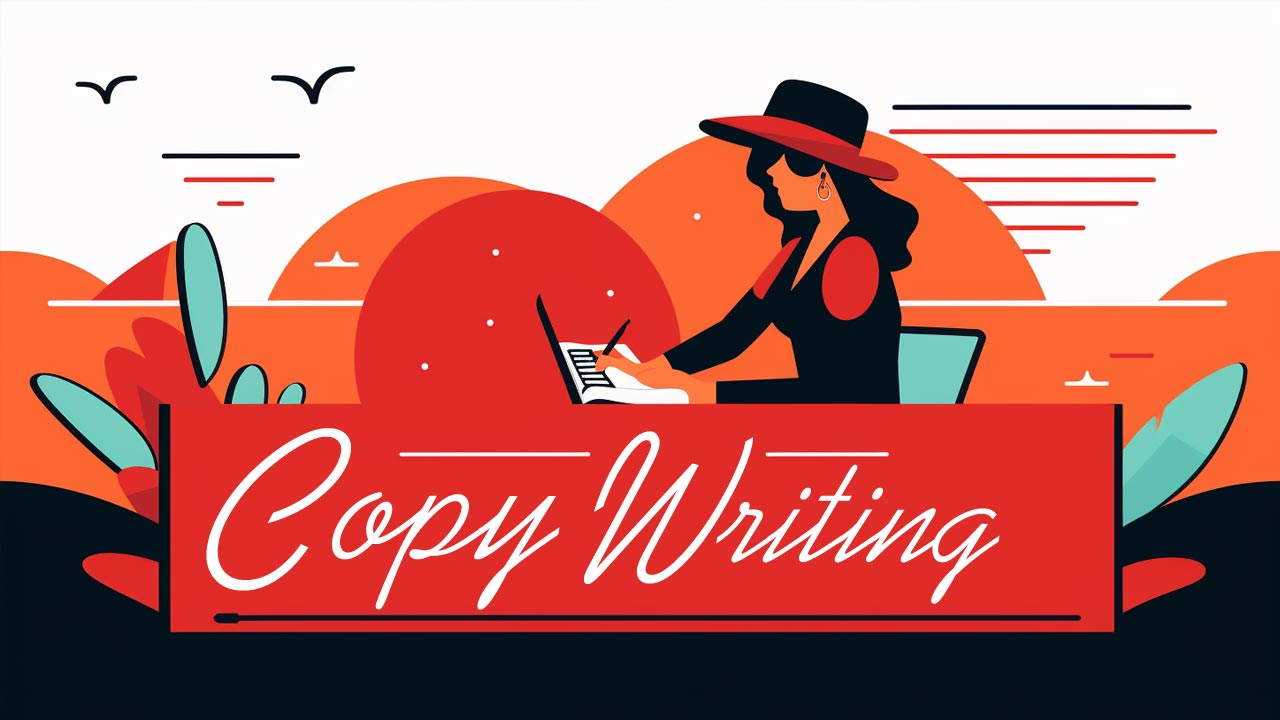You’re crafting a persuasive piece of copy and need some guidance? Look no further. In this article, we delve into the best copywriting models and provide you with the information you need to create compelling content. Let’s explore these models, their utility, and how you can implement them to boost the effectiveness of your copy.
Table of Contents
- Introduction
- AIDA: Attention, Interest, Desire, Action
- PAS: Problem, Agitate, Solve
- 4 P’s: Picture, Promise, Prove, Push
- BAB: Before, After, Bridge
- The Storytelling Model
- Final Thoughts
- Sources
Introduction
Copywriting is the art and science of crafting compelling messages that persuade readers to take action. It’s a critical component of marketing and advertising, and a well-written copy can significantly boost conversions and profits. In this article, we will explore five of the best copywriting models, showing you how to leverage these tried-and-tested methodologies to create compelling, action-inducing copy.
AIDA: Attention, Interest, Desire, Action
The AIDA model is an acronym standing for Attention, Interest, Desire, Action. It is a classic in the world of marketing and copywriting, providing a clear and straightforward guide to drafting compelling copy.
- Attention: The first and arguably most crucial step in the model. It’s about grabbing the reader’s attention. This is often achieved through a compelling headline or opening line. It should be provocative, intriguing, and directly address the target audience’s wants or needs. In an era where the average human attention span is dwindling, it’s crucial to ensure that your copy stands out amidst the sea of content available.
- Interest: Once you’ve captured your audience’s attention, the next step is to generate interest. This usually involves providing more information about your product or service, especially focusing on the benefits and how it can address the audience’s needs or pain points. Using storytelling, fascinating facts, or surprising statistics are effective ways to maintain the reader’s interest.
- Desire: After sparking interest, it’s time to fuel the desire. This is where you transition from talking about the features of your product or service to emphasizing the benefits. You need to make your audience want what you’re offering. This can be achieved by painting a vivid picture of how much better their situation could be with your product or service. Testimonials, reviews, and case studies can be particularly powerful here, as they provide social proof and build trust.
- Action: The final step is to motivate your reader to take action. This is typically a call to action (CTA) that clearly tells the reader what you want them to do next. Whether it’s purchasing a product, signing up for a newsletter, or downloading a guide, the action should be specific, clear, and easy to do. CTAs are often imperative, use action verbs, and create a sense of urgency to prompt immediate action.
While simple, the AIDA model is remarkably effective and versatile. It can be applied to a variety of contexts, from traditional advertisements to email campaigns, website content, and social media posts. Its sequential approach ensures that you are leading your audience down a path that culminates in a specific action, helping you achieve your marketing goals.
PAS: Problem, Agitate, Solve
The PAS model is another persuasive copywriting formula that stands for Problem, Agitate, Solve. It focuses on presenting a problem, exacerbating it, and then offering a solution, hence establishing your product or service as a remedy.
- Problem: Identify a problem that resonates with your target audience. The problem should be something your audience can instantly recognize and relate to. When writing this section, use language that reflects your understanding of the reader’s situation and demonstrate empathy to their plight. This not only establishes a connection with the reader but also builds credibility and trust.
- Agitate: Once you’ve identified the problem, the next step is to agitate it. This involves discussing the implications, consequences, or discomforts of the problem in depth, making the reader feel the pain associated with it. The goal is to highlight the urgency of the problem and make the reader desire a solution. Use emotionally-charged language to heighten the reader’s feelings of discontent and desire for change.
- Solve: Finally, present your product or service as the solution to the problem. Describe how your offering effectively addresses and resolves the issue. Explain its benefits, how it works, and why it’s the best solution available. Your solution should appear as the natural and logical answer to the problem, providing relief and adding value to the reader’s life.
The PAS model is particularly effective because it plays on human psychology. It capitalizes on our natural aversion to discomfort and our innate desire to find solutions to our problems. It’s an excellent model for advertising copy, landing pages, sales letters, and any scenario where you need to persuade your audience to make a purchase decision.
Remember, the key to effectively employing this model lies in truly understanding your audience and their problems. By empathizing with their situation and providing a genuine solution, you can build trust, make a persuasive case for your offering, and drive conversions.
4 P’s: Picture, Promise, Prove, Push
The 4 P’s copywriting model – Picture, Promise, Prove, Push – is an effective strategy for creating copy that not only captivates your audience but also builds trust and encourages action. Here’s a deeper look into each stage of this model:
- Picture: The first ‘P’ stands for Picture. This is where you paint a vivid image in your reader’s mind of the desired outcome or end state. The goal is to make the reader visualize themselves enjoying the benefits of your product or service. This can be done through storytelling, descriptive language, or presenting a compelling scenario. This approach aims to create a connection with the reader and stir their imagination.
- Promise: The Promise is your pledge to the reader that your product or service can deliver the pictured outcome. This promise should be compelling and believable, clearly outlining what the reader can expect. To make your promise convincing, it should be backed by your unique value proposition or a distinctive feature that sets you apart from the competition.
- Prove: After making a promise, you need to prove that you can deliver on it. This is where you provide evidence or validation that substantiates your claims. This could be in the form of customer testimonials, case studies, research data, or product demonstrations. The aim is to build credibility and trust, showing the reader that you’re not just making empty promises.
- Push: The final ‘P’ stands for Push. This is your call to action, where you motivate the reader to take the next step. The push should be clear, compelling, and easy for the reader to carry out. This could be purchasing a product, signing up for a service, subscribing to a newsletter, or any other action that moves the reader closer to the desired outcome.
The 4 P’s model is especially effective when you want to weave a narrative around your product or service, connecting emotionally with your reader while demonstrating the tangible value you can provide. It’s a comprehensive and persuasive approach that guides your audience from visualization to action, making it a powerful tool for any copywriter’s arsenal.
BAB: Before, After, Bridge
The BAB copywriting model stands for Before, After, Bridge. This simple yet powerful technique capitalizes on illustrating a transformation – showing the reader their current state (before), their potential state (after), and then bridging the gap with your product or service. Let’s delve deeper into each part of this model:
- Before: In the ‘Before’ phase, you present the reader’s current situation, including their problems, pain points, or challenges. The aim is to accurately depict their state, so they recognize themselves in the narrative. This creates relatability and captures the reader’s attention. The more accurately you describe their situation, the more credibility you build with them, making them more receptive to your solution.
- After: In the ‘After’ phase, you paint a picture of the potential future – what life could be like after the problem is solved. This should be an aspirational state, showcasing all the benefits and improvements that can be achieved with the resolution of the ‘before’ scenario. This phase is about inspiring hope and desire, making your audience want to move towards this ‘After’ state.
- Bridge: Lastly, the ‘Bridge’ phase is where you introduce your product or service as the pathway from the ‘Before’ state to the ‘After’ state. Here, you show how your product or service can solve their problem and bring about the transformation. Explain how your product works, its unique benefits, and why it’s the ideal solution to their problem.
The power of the BAB model lies in its simplicity and psychological impact. By clearly demonstrating a transition from a problematic state to an improved one, you ignite desire in your reader. The ‘Bridge’ then positions your product or service as the logical and necessary step to achieve this desired state. This model is particularly effective in sales copy, advertising, and any situation where you need to depict a clear transformation.
The Storytelling Model
Storytelling has always been a powerful tool for communication, and it’s no different in the realm of copywriting. A compelling story can captivate an audience, evoke emotions, and ultimately, inspire action. Here’s how you can incorporate storytelling into your copy:
- Set the Scene: The first step in the storytelling model is setting the scene. This involves describing a situation or context that your target audience can identify with. It could be a common problem they face, a shared aspiration, or even a relatable character. This helps the reader to connect with your narrative on a personal level.
- Introduce a Problem: The next step is introducing a problem. Just like in any good story, there needs to be some sort of conflict or challenge that needs to be overcome. This problem should resonate with your audience’s pain points or desires, making them invested in finding a solution.
- Present the Solution: Now, it’s time to introduce your product or service as the hero of the story – the solution to the problem. Explain how your offering can help overcome the challenge, focusing on the benefits and value it provides.
- Provide a Resolution: After presenting the solution, provide a resolution. This is where you show the positive outcomes that can be achieved when your product or service is used. This can be demonstrated through case studies, testimonials, or imagined scenarios. It’s about showing the ‘happy ending’ that your audience can look forward to.
- Call to Action: Finally, it’s time for the call to action. This is where you invite your audience to become a part of the story by taking a specific action. Whether it’s purchasing a product, signing up for a newsletter, or scheduling a consultation, this action should bring them closer to achieving the ‘happy ending’ depicted in your story.
The storytelling model allows you to engage your audience in an immersive narrative, making your copy more relatable and memorable. It provides a framework to showcase your product or service in a compelling manner, tapping into the emotional resonance of a well-told story to motivate action.
Final Thoughts
The most important takeaway from this article is that there isn’t a one-size-fits-all model in copywriting. The best model to use depends on your audience, your product or service, and the specific goals of your copy. However, regardless of which model you choose, remember that effective copywriting is about understanding your audience’s needs and showing how your product or service can meet those needs.
Each model we explored offers a different lens through which to craft your copy. The AIDA and PAS models focus on leading the reader through a structured process, from attention or problem recognition to action. The 4 P’s model emphasizes storytelling and the use of evidence, while the BAB model uses contrast to highlight the transformation your product or service can offer. Lastly, the Storytelling model provides a holistic framework to craft an engaging narrative around your product or service.
Sources
- “AIDA: Attention-Interest-Desire-Action.” Mind Tools.
- “The Problem-Agitate-Solve (PAS) Formula.” Copyhackers.
- “The 4 P’s: A Copywriting Formula That Works.” Kopywriting Kourse.
- “Before-After-Bridge: The Only Formula You Need For Writing Persuasive Content.” Copybot.
- “How to use the ‘Storytelling Model’ in Copywriting.” Copyblogger.
Master these models, understand their strengths and limitations, and apply them wisely to craft compelling, persuasive copy that drives conversions. Happy writing!













Leave A Comment